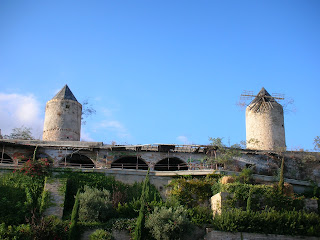
Mallorca is one of the greatest islands to live in the nature with the transparent seven-color sea, and the forests on hills. From so many people you can hear that the island is as good as Caribbean Islands.
Besides nature the capital of the Balearic Islands, Palma de Mallorca has special importance in terms of its history. Different civilizations such as the Phoenicians, Romans, Vandals, Byzantines, Muslims, and Christians have marked the city’s progress.
The places to visit, if you can take yourself from the charming sea:
· City Hall (Pl. Cort, 1)
· Cathedral (C. Palau Reial, 29)
· La Lonja (the fishermen’s market) (Pl. Llotja)
· The Almudaina Palace (C. Palau Reial, 20)
· Bellver Castle (C. Camilo José Cela, 17)
· Arab Baths (C. Can Serra, 7)
Besides the Museums and Exhibition halls, at the center of the city, shopping districts or the small traditional shops might attract your attention too. In Placa España where buses from the airport stop, you can find tourism information.
Although you may follow and enjoy different routes, here is an alternative route to follow:
Plaza de la Reina can be a good starting point. Following that s’Hort del Rei gardens then the old city walls is a nice route to follow. From the Gothic cathedral, you can enjoy a panoramic view of the Parc de la Mar, the Ses Voltes cultural space, and the bay. Then Palacio de la Almudaina, and the Palacio Episcopal are in the list.
If you follow Palau Reial Street you'll end up at the Plaza de Cort, where you will find the emblematic city hall.
From there you can head towards the Born, going through some of the city’s unique shopping streets. Very close to this street you can find the exhibitions and the tourist information office at the charming Casal Solleric, then the fishermen’s market and Church of Santa Cruz. The more you travel through the antic streets the more you discover.
A good representation of Palma’s nightlife is the beautiful Paseo Marítimo. After the famous surrealist painter, John Miro who lived and died in Palma, Fundació Pilar i Joan Miró serves to the art lovers in Palma. Bus number 3 takes you to the Fundació Pilar i Joan Miró and also to a lovely beach Cala Mayor. Bus number 15 takes you to the other part of the city which includes all the tourist beaches called Las Arenas.
The island is called a "German island". When you arrive on the Island, you see the reality behind this joke. The amount of German community is remarkably high.
Finally don't miss the landing view of the island.
Enjoy!























.jpg)
.jpg)
.jpg)
.jpg)
.jpg)
.jpg)
.jpg)
.jpg)
.jpg)
.jpg)
.jpg)

.jpg)

.jpg)
.jpg)
.jpg)


.jpg)




.jpg)
.jpg)
.JPG)
.jpg)
.JPG)
.jpg)


.jpg)